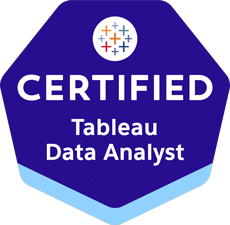Data visualization is both science and art. It’s about painting a picture that speaks a thousand numbers. Think of it like transforming data into an illustrative narrative. But it requires creative discipline and a set of rules so you don’t get lost in the multitude of choices and creative decisions. This is what your style guide is for. Consider it as the definitive roadmap for crafting your data-driven products.
“Just as being an expert painter requires knowledge of brushes, textures, and palettes – becoming adept at data visualization requires a style guide. It’s your toolkit for turning complexity into clarity.”
Major industry leaders like Google and IBM are now incorporating data visualization guidelines into their design systems. This shows how critical consistent output in data visualization is in shaping business strategies today. And let’s not forget how important it is to have dashboards that are not only easy to comprehend, but also visually striking and consistent with your brand. Is your business ready to step up its game?
Why Your Company Needs a Data Visualization Style Guide
Ever consider what a data visualization style guide can do for your company? Much like its counterpart – a branding style guide, it’s a set of policies that set a standard for presenting data. Its purpose? To guarantee clarity, uniformity, and most critically, understanding. Now, you might be asking – why should my company invest in that? Let’s explore this further.
1. Consistency is Key
Your company’s data presentation is like your brand personality. Picture this: Would you let your logo look like a mismatched patchwork quilt across different platforms or media? Didn’t think so! Likewise, your data visualizations shouldn’t look like they were each made by a different person with different design visions. A style guide is your roadmap, ensuring every data chart or dashboard gains entry into the club of ‘consistent design standards’.
2. Enhancing Data Comprehension
Have you ever found yourself lost in an incomprehensible dashboard? With a style guide in place, complex data is transformed into easily digestible information. The guide provides rules for best practices in color usage, typography, layout, and much more. This not only makes your data more accessible but also enhances its comprehension.
3. Streamlining Communication
Charts and dashboards are a powerful tool for communication. They provide a language that can convey complex information quickly and effectively. By having a style guide, you’re essentially creating a common visual language for your company. It ensures that everyone, from the top executives to the newest hires, interprets the data in the same way, streamlining internal communication.
4. Saving Time and Resources
Imagine the time and effort saved when everyone in your company follows the same set of rules for data visualization. No more back-and-forths over which color scheme to use or how to format a particular chart. With a style guide, these decisions are predetermined, freeing your analysts to do what they do best – extracting insights from the data.
To sum it up, a data visualization style guide is not just a nice-to-have, it’s a necessity. It provides the framework for a consistent, comprehensible, and efficient representation of your company’s data, promoting better decision-making and enhancing overall business performance.
How to Create a Data Visualization Style Guide
Having understood the importance and power of a data visualization style guide for your company, you might be asking: how exactly can I create one for my company and what should it include? Well, I am going to share my personal insights on crafting a compelling data visualization style guide. Here’s a step-by-step rundown:
- Know Your Audience:
Just like any story, your data needs to resonate with its audience. Who are they? What is their level of data literacy? Answering these questions will help you tailor your style guide to meet their expectations. - Define Your Brand:
Think about your company’s personality. Is it formal, playful, or somewhere in between? Your style guide should mirror this personality in visuals. - Choose Your Colors Wisely:The choice of colors is so much more than an aesthetic decision. It’s about creating visuals that not only engage but are also meaningful to your audience. A good style guide should define colors that align well with your company’s brand identity. However, this doesn’t mean that your data visualization palettes must strictly replicate your brand colors. What you want is a sensible level of relevant consistency.Your guide should cover both categorical and quantitative palettes, with an extra emphasis on constructing the categorical palette in a way so that the color are friendly to people with color vision deficiency.
- Set Typography Guidelines:
The choice of typography used in data visualization often slips under the radar. It’s the subtle art of making your text legible, engaging, and in tune with the overall design. The point is to craft your text in a manner that not only screams readability but also looks appealing and harmonizes with the overall aesthetic of your charts or dashboards. Think: font styles, sizes, and weights – it’s all about maintaining an unbroken line of consistency throughout all your visual presentations. - Iconography:
Icons are the shorthand of data visualization. They convey complex ideas quickly and effortlessly, saving your audience the trouble of wading through dense text. Detailed guidelines on icon use, including their style, size, and placement, should be part of your style guide. - Set up your typical Dashboard Layout:
Imagine walking into a messy room. Would you stay or leave? That’s precisely how your audience feels when they encounter cluttered visuals. A clean, organized layout guided by a grid system helps to make your data easy on the eyes and simple to interpret. - Establish conventions for units and abbreviations:
There are many different conventions to display units, dates and abbreviations. Specifying them upfront will help avoid ambiguity and inconsistencies. Do you use only numbers in your dates or do you spell out months? Do you abbreviate months? Do you use capital or lowercase ‘m’ for millions? How do you abbreviate percentage points? What about currency names and abbreviations? These are just a few examples of things to address. - Specify Chart and Graph Styles: Your guide should outline the suggested types of charts and graphs to be used depending on the type of data you have and the message you want to convey.
- Quality Control checklist:
After the visuals are made, the analyst should go over a checklist to make sure that all elements are consistent with the style guide requirements and all interactive elements function as intended. If you used software like Tableau to create interactive dashboards, the cheklist should include requirements for cleaning the workbook and documenting calculations.
So, there you have it! My personal approach to creating a data visualization style guide. Crafting it might seem like a daunting task at first, but it’s absolutely worth it. Remember, the goal is to create a guide that promotes consistency, streamlines communication, and facilitates creation of engaging data presentations while saving your team a lot of time and resources.
A Few Examples of Successful Data Visualization Style Guides
Let’s take a spin around the industry and see how some businesses have utilized data visualization style guides to their advantage.
1. The Urban Institute
The detailed guide contains explicit instructions for ensuring a consistent look and feel for all of Urban’s charts and graphs. The Urban Institute’s Data Visualization Guideline outlines the structure, size, and necessary parts of the chart, as well as typography and color. There are numerous examples of various types of charts produced in accordance with the Urban Institute’s brand criteria. There is also a section dedicated to maps.
2. Google’s Material Design
Google’s Material Design is not just another style guide – it’s a complete design language. With its strong emphasis on grid-based layouts, responsive animations, transitions, and depth effects such as lighting and shadows, it serves as a remarkable example of a comprehensive style guide. What makes it stand out is its explicit focus on motion and interaction, providing clear guidance on how data should not just look, but also behave.
3. U.S. Government’s Data Visualization Style Guide
When it comes to public-oriented data visualization, the U.S. government’s style guide stands out. Their guide is designed to be simple and straightforward, focusing on clear communication. The guide lays out the principles for creating effective graphs, charts, and maps that express data in a way that the general public can easily understand. The emphasis here is on clarity and accessibility, ensuring that their visualizations can be quickly and easily interpreted by a wide audience.
4. Financial Times
Another example of a data visualization style guide is the one created by the Financial Times. The guide is a large poster with specific recommendations for different types of visualizations. There is a short description of each chart, as well as recommendations and use cases for each type of charts. The poster can be found at https://github.com/Financial-Times/chart-doctor/blob/main/visual-vocabulary/Visual-vocabulary-en.pdf
5. Salesforce
Salesforce also has a useful data visualization style guide that can be accessed on their website. The guide provides detailed information on their design principles, color palette, typography, and iconography, as well as guidelines for creating effective charts, graphs, and dashboards. The guide is well-organized and includes examples of how to use these elements in different types of visualizations. It also includes information on accessibility and data security. You can find the guide here: https://www.lightningdesignsystem.com/guidelines/charts/
As you can see, every company may have different needs and goals when it comes to their data visualizations. However, the central purpose remains the same: to ensure that data is presented in a consistent, understandable, and aesthetically pleasing manner. So whether you’re a mammoth tech company, a government organization, or a small startup, having a robust style guide is not just beneficial – it’s essential.



